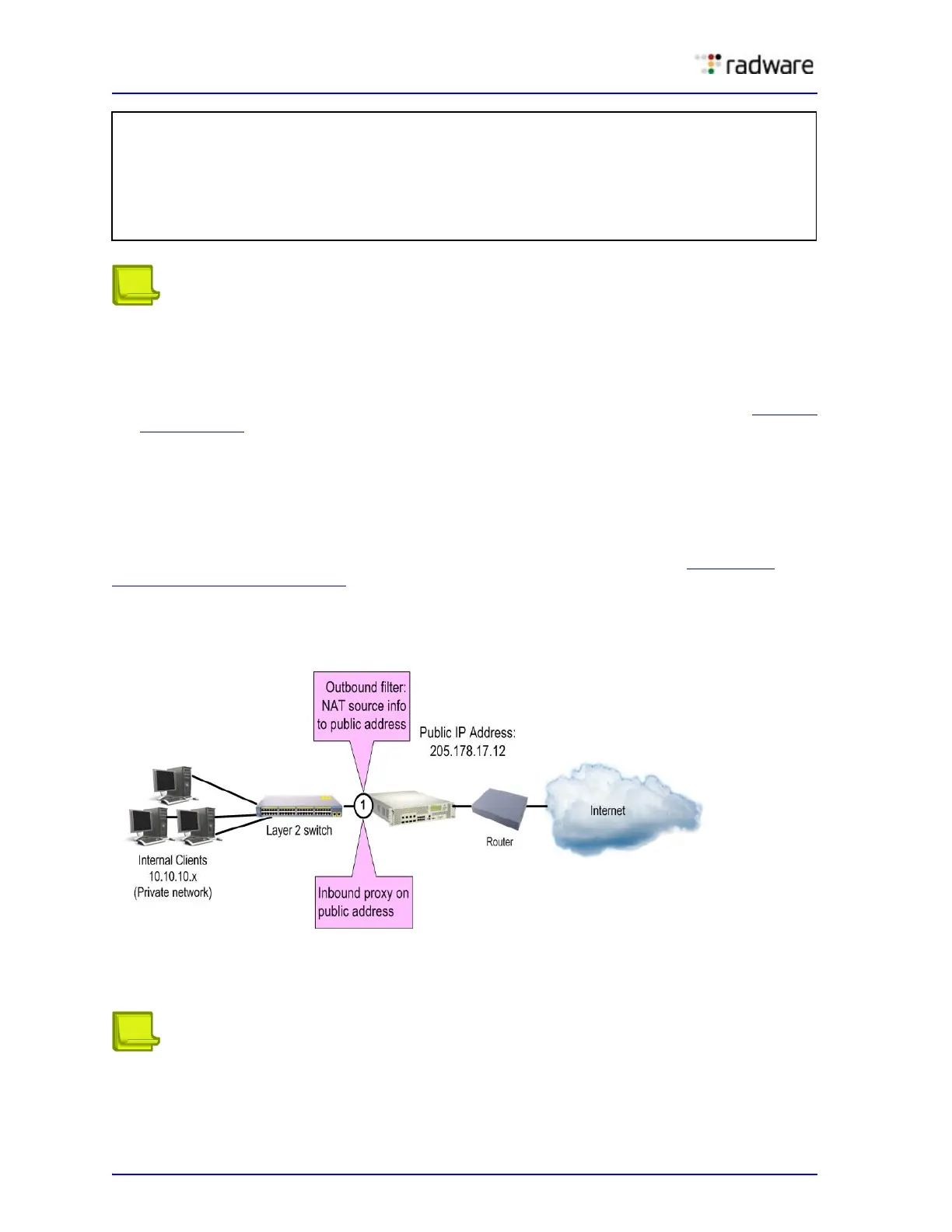Alteon Application Switch Operating System Application Guide
Filtering and Traffic Manipulation
386 Document ID: RDWR-ALOS-V2900_AG1302
Notes
• Within each filter, the smask and dmask values are identical.
• All parameters for both filters are identical except for the NAT direction. For Filter 10, nat
source is used. For Filter 11, nat dest is used.
• Filters for static (non-proxy) NAT should take precedence over dynamic NAT filters (see Dynamic
NAT, page 386). Static filters should be given lower filter numbers.
• After port filtering is enabled or disabled and you apply the change, session entries are deleted
immediately.
Dynamic NAT
Dynamic NAT is a many-to-one solution. Multiple clients on the private subnet take advantage of a
single external IP address, thus conserving valid IP addresses. In the example in Figure 61 -
Dynamic NAT Example, page 386, clients on the internal private network require TCP/UDP access to
the Internet:
Figure 61: Dynamic NAT Example
You may directly connect the clients to Alteon if the total number of clients is less than or equal to
the ports.
Note: Dynamic NAT can also be used to support ICMP traffic for PING.
>> SLB port 1# /cfg/slb/port 2
(Select the client-side port)
>> SLB port 2# add 11
(Add the inbound filter)
>> SLB port 2# filt enable
(Enable filtering on port 2)
>> SLB port 2# apply
(Apply configuration changes)
>> SLB port 2# save
(Save configuration changes)
